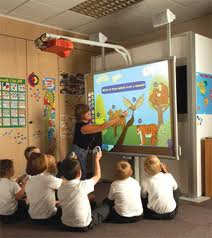ESOL teachers must be inventive, creative, and committed to keeping up with innovation in a rapidly changing world. Teacher should be encouraged to employ instructional technologies in the educational setting- including online discussion, podcasting, and blogging- so that they can keep abreast of best practices in technology.
The future teachers need to know how to teach students who represent generations to come.
1. Integrating instructional Technology into an Assignment
Seeking to understand how ESOL teachers create meaningful content for future
Teaching content, such as case study portfolios, can be integrated with instructional technology, such as online discussion, podcasts, blogs, and wiki, to enhance learning experiences and provide better curriculum.
2. The ELL Case Study
This part of the assignment consisted of a number of step: (a) prepare a case study (b) collect data from the ELL (c) analyze multiple data sets, and (d) create a problem scenario specific to the ELL by coming up with the reflective and discussion questions based on the case study experience.
3. Blogging
Blogs are online commentary, personal reflections, or new on a particular subject.
4. Podcasting
Internet-based audio programs available for downloading that allow the listener to play the audio through a computer or on the MP3 player.
5. Creating a Wiki
After posting their case studies, blogging about them, and creating they podcasts, the preservice ESOL teachers suggested teaching methodsand activities to their classmates via a wiki in Blackboard or another program or Website.
6. Online Discussion
Communities maybe private or public, and the content can be created and maintained by the instructors. In this project, online discussion provided a window to observe how the preservice teachers constructed knowledge and interacted with other.
7. Implications
This assignment focusing on implementing technology in the classroom proved to be dynamic, effective, and beneficial for everyone involved.
There are 5 tips for integrating Technology in the classroom
1. Take risk with new technology.
2. Be familiar with the technology before introducing it to others.
3. Make sure that instructional technologies carryfully fit with course objectives and outcome.
4. Built a positive learning community.
5. Research and use various tutorials and helpful Web sites.



